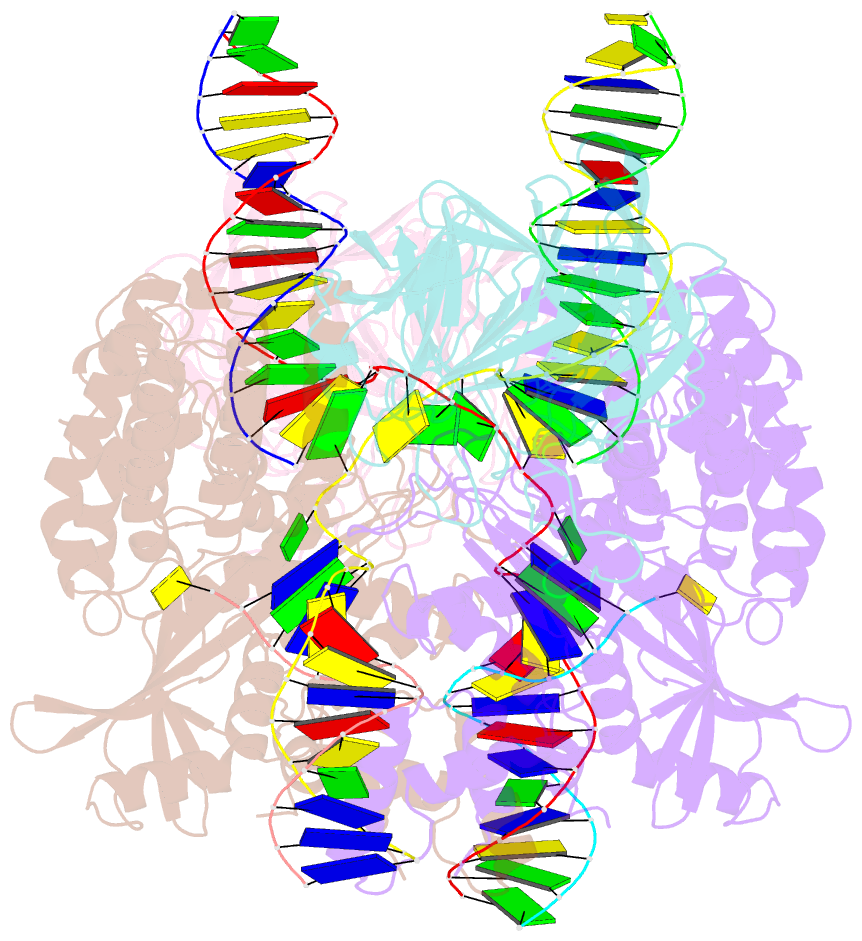Summary information and primary citation
- PDB-id
- 6oes; SNAP-derived features in text and JSON formats;
DNAproDB
- Class
- recombination-DNA
- Method
- cryo-EM (3.06 Å)
- Summary
- cryo-EM structure of mouse rag1-2 stc complex (without nbd domain)
- Reference
- Chen X, Cui Y, Wang H, Zhou ZH, Gellert M, Yang W (2020): "How mouse RAG recombinase avoids DNA transposition." Nat.Struct.Mol.Biol., 27, 127-133. doi: 10.1038/s41594-019-0366-z.
- Abstract
- The RAG1-RAG2 recombinase (RAG) cleaves DNA to initiate V(D)J recombination, but RAG also belongs to the RNH-type transposase family. To learn how RAG-catalyzed transposition is inhibited in developing lymphocytes, we determined the structure of a DNA-strand transfer complex of mouse RAG at 3.1-Å resolution. The target DNA is a T form (T for transpositional target), which contains two >80° kinks towards the minor groove, only 3 bp apart. RAG2, a late evolutionary addition in V(D)J recombination, appears to enforce the sharp kinks and additional inter-segment twisting in target DNA and thus attenuates unwanted transposition. In contrast to strand transfer complexes of genuine transposases, where severe kinks occur at the integration sites of target DNA and thus prevent the reverse reaction, the sharp kink with RAG is 1 bp away from the integration site. As a result, RAG efficiently catalyzes the disintegration reaction that restores the RSS (donor) and target DNA.





